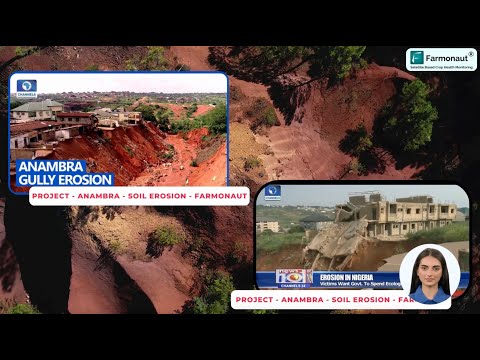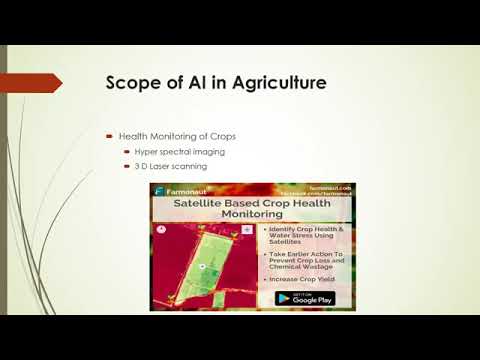Empowering Rural Youth: South Plains Leadership Summit Ignites Change in West Texas Agriculture
“The South Plains Leadership Summit in Lubbock, Texas, brought together high school students from across the region to address 3 key rural challenges.”
In the heart of West Texas, a transformative event recently took place that promises to reshape the future of rural communities and agriculture in the region. The South Plains Leadership Summit, hosted by the Texas Tech Davis College of Agriculture at the National Ranching Heritage Center in Lubbock, brought together some of the brightest young minds from across the South Plains. This groundbreaking gathering focused on empowering rural youth leadership and addressing the unique challenges faced by West Texas communities.
As we delve into the details of this inspiring summit, we’ll explore how it’s cultivating a new generation of leaders committed to revitalizing rural Texas. From innovative workshops to expert insights, this event has set the stage for a bright future in West Texas agriculture and community development.
The Genesis of the South Plains Leadership Summit
The South Plains Leadership Summit was born out of a pressing need to address the challenges facing rural communities in West Texas. With a focus on rural youth leadership and South Plains agriculture education, the summit aimed to equip high school students with the tools and knowledge they need to make a real difference in their hometowns.
Jason Headrick, one of the event organizers, emphasized the importance of immediate action: “We want them to take on some of these challenges like water, local economies, what are things they can do as young leaders to make an impact now and not wait 10 years, 20 years down the road – what can they do now to empower their hometowns.”

A Gathering of Young Visionaries
The summit brought together approximately 35 high school sophomores and juniors from across the South Plains region. These young leaders converged at the National Ranching Heritage Center, a fitting location that symbolizes the rich agricultural history of West Texas while looking towards its future.
The diverse group of participants represented various rural communities, each bringing their unique perspectives and experiences to the table. This diversity was crucial in fostering a comprehensive understanding of the challenges and opportunities facing rural Texas.
Addressing West Texas Community Challenges
The summit focused on several key areas that are critical to the future of West Texas communities:
- Water Conservation: In a region where water is a precious resource, participants explored innovative strategies for water conservation in West Texas. This included discussions on efficient irrigation techniques, drought-resistant crops, and community-wide water management initiatives.
- Rural Economy Solutions: Students delved into the complexities of rural economies, brainstorming ideas to stimulate economic growth and create sustainable job opportunities in their communities.
- Health Care Challenges: Addressing the unique rural health care challenges faced by West Texas communities was a key focus. Participants discussed telemedicine, mobile health clinics, and strategies to attract and retain healthcare professionals in rural areas.
- Education: The summit explored ways to enhance educational opportunities in rural areas, including distance learning programs and partnerships with higher education institutions.
- Agriculture Programs: Innovative Texas agriculture programs were showcased, highlighting sustainable farming practices, precision agriculture, and the integration of technology in farming.
“Participants at the summit engaged in leadership workshops covering 5 crucial areas: water conservation, rural economy, healthcare, personal branding, and skill-building.”
Skill-Building Workshops: Nurturing Future Leaders
The summit featured a series of intensive high school leadership workshops designed to equip participants with essential skills for making an impact in their communities. These workshops covered a wide range of topics, including:
- Leadership Development: Students learned about different leadership styles, effective communication, and how to inspire and motivate others.
- Public Speaking: Workshops focused on helping students articulate their ideas clearly and confidently, a crucial skill for future community leaders.
- Problem-Solving: Participants engaged in exercises that honed their critical thinking and problem-solving abilities, crucial for addressing complex rural challenges.
- Team Building: Collaborative activities taught students the importance of teamwork and how to leverage diverse strengths within a group.
- Project Management: Basic project management skills were introduced, helping students learn how to plan and execute community initiatives effectively.
Networking and Personal Branding: Building Connections for the Future
A key component of the summit was the emphasis on networking and personal branding. In today’s interconnected world, these skills are crucial for young leaders looking to make a difference. The summit provided numerous opportunities for students to:
- Connect with peers from other rural communities, fostering a network of like-minded young leaders across the South Plains.
- Interact with local experts and mentors in various fields, including agriculture, business, and community development.
- Learn about personal branding and how to effectively communicate their vision and values.
- Explore the use of social media and digital platforms for community engagement and leadership.
These networking opportunities were designed to help students build lasting connections that will support their future endeavors in rural development and leadership.

Expert Insights: Bridging Theory and Practice
One of the summit’s most valuable aspects was the opportunity for students to hear from local experts on major topics affecting rural communities. These sessions provided a bridge between theoretical knowledge and practical application, covering areas such as:
- Education: Experts discussed the future of rural education, including innovative teaching methods and the integration of technology in classrooms.
- Health Care: Healthcare professionals shared insights on addressing the unique challenges of providing quality healthcare in rural settings.
- Agriculture: Agricultural experts presented on sustainable farming practices, precision agriculture, and the future of farming in West Texas.
- Water Management: Specialists in water conservation shared strategies for efficient water use in agriculture and communities.
These expert sessions not only provided valuable information but also inspired students to think creatively about solutions to rural challenges.
Innovative Technologies in Agriculture: A Glimpse into the Future
As part of the summit’s focus on agriculture and rural development, participants were introduced to innovative technologies that are shaping the future of farming. One such technology that garnered significant interest was satellite-based farm management solutions, exemplified by platforms like Farmonaut.
Farmonaut, a pioneering agricultural technology company, offers advanced, satellite-based farm management solutions via Android, iOS, web/browser App, and API. While not directly involved in the summit, the company’s technology represents the kind of innovative solutions that young rural leaders might leverage in the future.
These technologies offer several benefits that align with the summit’s goals:
- Real-time Crop Health Monitoring: Using satellite imagery to monitor crop health, providing valuable insights for better farm management.
- Resource Optimization: Helping farmers make informed decisions about irrigation and fertilizer usage, crucial for water conservation efforts in West Texas.
- AI-driven Advisory Systems: Providing personalized farm advice based on data analysis, supporting more efficient and sustainable farming practices.
- Blockchain-based Traceability: Ensuring transparency in agricultural supply chains, which could be crucial for rural economic development.
While the summit didn’t specifically endorse any particular technology, exposing young leaders to these innovative solutions broadens their understanding of the tools available for addressing rural challenges.
For those interested in exploring such technologies further, platforms like Farmonaut offer various solutions:
Carbon Footprinting – A tool that helps agribusinesses monitor and reduce their environmental impact, crucial for sustainable agriculture.
Crop Loan and Insurance – Facilitating easier access to financial services for farmers, which could be a game-changer for rural economies.
Crop Plantation and Forest Advisory – Providing expert advice on crop management and forest conservation, aligning with the summit’s focus on sustainable resource management.
Rural Development Initiatives: From Ideas to Action
A significant portion of the summit was dedicated to exploring and developing rural development initiatives. Participants were encouraged to think creatively about how they could apply their newly acquired knowledge and skills to make a tangible difference in their communities. Some of the key areas of focus included:
- Community Engagement Projects: Students brainstormed ideas for projects that could increase civic participation and strengthen community bonds.
- Sustainable Agriculture Initiatives: Participants explored ways to promote sustainable farming practices in their local areas, considering both environmental and economic factors.
- Youth Retention Strategies: Addressing the issue of youth migration from rural areas, students developed ideas to make their communities more attractive to young people.
- Technology Integration: Ideas were shared on how to better integrate technology into rural life, from improving internet connectivity to adopting smart farming techniques.
These initiatives were not just theoretical exercises; students were encouraged to develop action plans for implementing their ideas upon returning to their communities.
The Impact of Youth in Rural Communities
One of the most inspiring aspects of the South Plains Leadership Summit was its focus on immediate action. The organizers emphasized that these young leaders didn’t need to wait until adulthood to make a difference. The summit highlighted several ways that youth impact in rural communities can be significant and immediate:
- Community Service Projects: Students were encouraged to initiate and lead community service projects, from local clean-up efforts to mentoring programs for younger children.
- Advocacy: Participants learned how to effectively advocate for issues important to their communities, such as improved educational resources or healthcare access.
- Innovation in Agriculture: Young people were inspired to bring fresh perspectives to traditional farming practices, potentially introducing new technologies or sustainable methods.
- Cultural Preservation: The summit emphasized the role of youth in preserving and celebrating local cultural heritage, an essential aspect of rural community identity.
By empowering these young leaders to take action now, the summit set the stage for a new wave of rural development driven by the energy and innovation of the next generation.
Challenges and Opportunities in West Texas Agriculture
The summit provided a comprehensive overview of the current state of West Texas agriculture, highlighting both the challenges and opportunities that lie ahead. Key points of discussion included:
- Water Scarcity: The ongoing challenge of water scarcity in West Texas and innovative irrigation techniques to address this issue.
- Climate Adaptation: Strategies for adapting to changing climate conditions, including drought-resistant crop varieties and conservation tillage practices.
- Technological Integration: The potential for integrating advanced technologies like precision agriculture and AI-driven farming systems to enhance productivity and sustainability.
- Market Access: Improving market access for small and medium-sized farms, including exploring direct-to-consumer models and value-added products.
- Workforce Development: Addressing the need for a skilled agricultural workforce in the face of changing farming practices and technologies.
These discussions not only informed participants about the current state of agriculture in their region but also inspired them to think creatively about solutions to these pressing issues.
Fostering Innovation and Collaboration
A key theme throughout the summit was the importance of innovation and collaboration in addressing rural challenges. Participants were encouraged to think outside the box and work together to develop creative solutions. This approach was evident in several aspects of the summit:
- Collaborative Problem-Solving Sessions: Students worked in diverse teams to tackle simulated rural challenges, fostering skills in teamwork and creative thinking.
- Innovation Workshops: Sessions focused on teaching innovative thinking techniques and how to apply them to rural development issues.
- Cross-Community Networking: Opportunities were provided for students from different communities to share ideas and best practices, fostering a broader network of rural youth leaders.
- Mentor Connections: Participants were connected with mentors from various fields, providing guidance and inspiration for their future endeavors.
This emphasis on innovation and collaboration is crucial for developing sustainable solutions to the complex challenges facing rural communities in West Texas.
The Role of Education in Rural Development
Education emerged as a central theme in discussions about rural development. The summit highlighted several key aspects of education that are crucial for the future of rural communities:
- STEM Education: The importance of strong Science, Technology, Engineering, and Mathematics (STEM) education in preparing rural youth for future careers in agriculture and related fields.
- Vocational Training: Discussions on enhancing vocational education programs to provide practical skills needed in rural economies.
- Distance Learning: Exploring the potential of online and distance learning to bring advanced educational opportunities to rural areas.
- Agricultural Education: The need for comprehensive agricultural education programs that combine traditional knowledge with modern farming techniques.
- Entrepreneurship Education: Introducing entrepreneurship programs to encourage innovation and business development in rural areas.
These educational initiatives are seen as key to retaining talented youth in rural areas and fostering economic growth and innovation.
Looking to the Future: The Legacy of the South Plains Leadership Summit
As the South Plains Leadership Summit concluded, it was clear that its impact would extend far beyond the event itself. The summit has set in motion a wave of change, driven by the energy and vision of young rural leaders. Here’s how the summit is expected to shape the future of West Texas:
- Ongoing Mentorship: Plans for continued mentorship programs to support participants as they implement their ideas in their communities.
- Community Project Initiatives: Support for community-based projects initiated by summit participants, including potential funding opportunities.
- Annual Follow-up Events: Proposals for annual follow-up events to track progress, share successes, and address new challenges.
- Rural Youth Network: The establishment of a South Plains rural youth network to facilitate ongoing collaboration and idea-sharing.
- Integration with Education: Efforts to integrate summit learnings into local school curricula to broaden the impact on rural youth.
The legacy of the South Plains Leadership Summit is poised to be a transformative force in West Texas, nurturing a new generation of leaders committed to the prosperity and sustainability of their rural communities.
Conclusion: A Bright Future for West Texas Rural Communities
The South Plains Leadership Summit has undoubtedly ignited a spark of change in West Texas agriculture and rural development. By empowering young leaders with knowledge, skills, and a network of support, the summit has laid the groundwork for a future where rural communities thrive through innovation, collaboration, and sustainable practices.
As these young visionaries return to their hometowns, armed with new ideas and a renewed sense of purpose, we can expect to see positive changes rippling through the South Plains. From water conservation initiatives to innovative economic solutions, the impact of this summit will be felt for years to come.
The success of the South Plains Leadership Summit serves as a powerful reminder of the potential that lies within rural youth. By investing in their development and providing them with the tools to address local challenges, we are not just securing the future of West Texas agriculture – we are nurturing the next generation of leaders who will shape the destiny of rural America.
As we look to the future, it’s clear that the spirit of innovation and community that defined this summit will continue to drive progress in West Texas. The journey of rural revitalization has only just begun, and with these young leaders at the helm, the future of West Texas looks brighter than ever.
FAQs About the South Plains Leadership Summit
- Who organized the South Plains Leadership Summit?
The summit was organized by the Texas Tech Davis College of Agriculture and held at the National Ranching Heritage Center in Lubbock, Texas.
- Who attended the summit?
Approximately 35 high school sophomores and juniors from across the South Plains region participated in the event.
- What were the main topics covered at the summit?
The summit focused on rural youth leadership, addressing challenges like water conservation, rural economy solutions, health care issues, and agriculture education.
- How long did the summit last?
The summit was a one-day event held on a Saturday.
- Will there be future summits like this one?
While specific plans weren’t mentioned, the success of this summit suggests that similar events may be organized in the future.
- How can other students get involved in future leadership opportunities?
Interested students should stay connected with their local schools and agricultural organizations for information on upcoming events and opportunities.
- What immediate actions can summit participants take in their communities?
Participants were encouraged to initiate community projects, engage in local advocacy, and apply their new leadership skills in various community activities.
- How does this summit contribute to the future of West Texas agriculture?
By empowering young leaders with knowledge and skills, the summit aims to foster innovation and sustainable practices in West Texas agriculture and rural development.
| Skills/Attributes | Before Summit | After Summit |
|---|---|---|
| Agricultural Knowledge | Basic | Advanced |
| Leadership Confidence | Low | High |
| Community Engagement | Minimal | Active |
| Innovation Mindset | Undeveloped | Cultivated |
| Networking Connections | Limited | Extensive |
Explore Farmonaut’s Agricultural Technology Solutions
While the South Plains Leadership Summit focused on empowering rural youth, it’s worth noting the innovative technologies that are shaping the future of agriculture. Farmonaut, a leading agricultural technology company, offers solutions that align with many of the summit’s goals for sustainable and efficient farming practices.
Explore Farmonaut’s offerings:
For developers interested in integrating agricultural data into their own applications, Farmonaut offers an API:
Earn With Farmonaut
Earn 20% recurring commission with Farmonaut’s affiliate program by sharing your promo code and helping farmers save 10%. Onboard 10 Elite farmers monthly to earn a minimum of $148,000 annually—start now and grow your income!
Learn More About the Affiliate Program
Farmonaut Subscriptions







